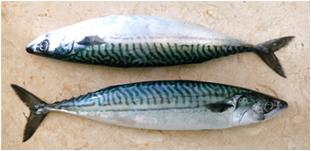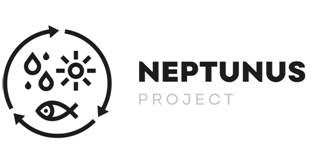Fish and carbon footprint
 2020-06-03 (IPMA)
2020-06-03 (IPMA)
The carbon footprint is a way of measuring the impact of human activities on the environment through the quantification of greenhouse gases during the entire life cycle of a product or service.
A greenhouse gas (GHG) is any gas that absorbs and releases infrared radiation into the atmosphere. Many GHGs occur naturally in the atmosphere, such as carbon dioxide (CO²), methane (which is about 25 times more potent than CO²), nitrous oxide (300 times more potent than CO2) and water vapor, while others are of man-made products, such as chlorofluorocarbons (CFCs), hydrofluorocarbons (HFCs) and perfluorocarbons (PFCs), as well as sulfur hexafluoride. The carbon footprint represents the amount of these gases measured in kilograms or tons of CO².
In the last century, atmospheric GHG concentrations have increased due to human activities, leading to significant and persistent climate changes. Climate change mitigation is the intervention to reduce the human impact on the climate system through strategies that reduce GHG sources and emissions.
The environmental costs associated with food production are generally higher in products of animal origin, but there is a big difference between different groups of animals. Forms of animal protein from the ocean from fishing or aquaculture generally have a lower carbon footprint and are more efficient, also considering the water consumption and necessary land area limitations, compared to livestock animals.
Most of the environmental costs of fish derive from the fuel of fishing boats or feed in aquaculture, but there are major differences between species and, in some cases, for the same product, depending on the production method or fishing gear used. For example, fishing is based on the extraction of wild resources, which are highly variable in space and time, and is conducted using a variety of methods with very different efficiencies, resulting in a wide range of GHG emissions.
The forms of animal protein with the least impact are small pelagics (eg sardines, mackerel, horse mackerel) because they can be caught with low fuel consumption, as well as aquaculture bivalves because they feed naturally in the ocean.
In any case, this analysis is limited to studies that use the Life Cycle Analysis (LCA) methodology, and there are still methods of animal production that have not been evaluated.
In this regard, we refer that the IPMA participates in the European project "Neptunus" which aims to study various fishery and aquaculture products produced in the Atlantic, integrating the diversity of used packaging, based on the LCA and finding key actions for the most efficient use of resources: https://neptunus-project.eu/
-
Consulted documents:
Hilborn, R., Banobi, J., Hall, S. J., Pucylowski, T., & Walsworth, T. E. (2018). The environmental cost of animal source foods. Frontiers in Ecology and the Environment, 16(6), 329-335.
Skontorp Hognes, E., Tyedmers, P., Krewer, C., Scholten, J., & Ziegler, F. (2018). Seafood Life Cycle Inventory database: Methodology and Principles and Data Quality Guidelines. http://www.diva-portal.org/smash/get/diva2:1263853/FULLTEXT01.pdf
The Seafish Guide to Greenhouse Gas Emissions in Seafood https://www.seafish.org/media/publications/SeafishGuidetoGHGEmissionsinSeafood_201409.pdf
Imagens associadas


